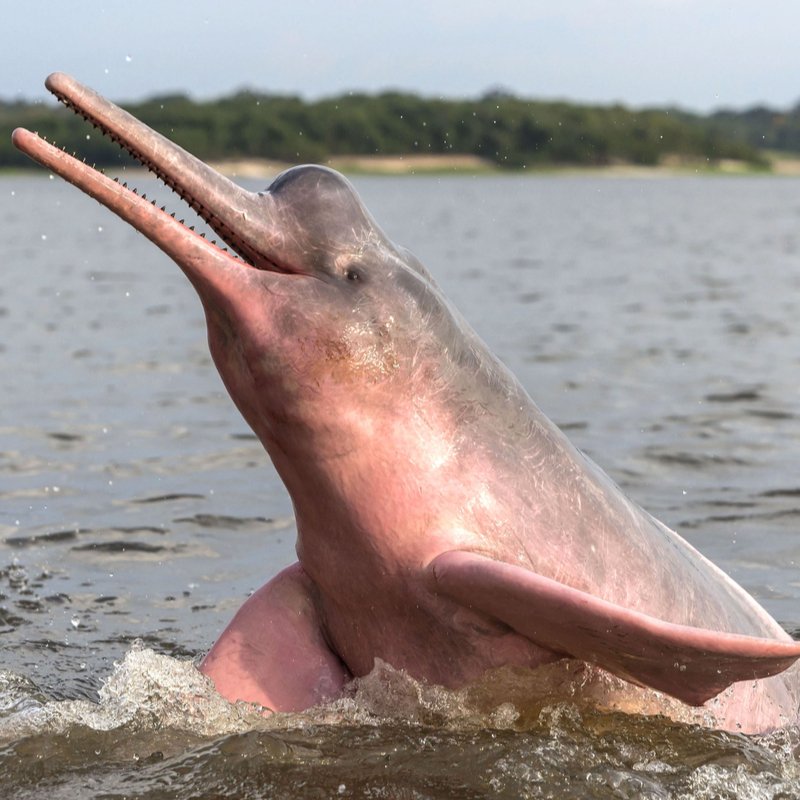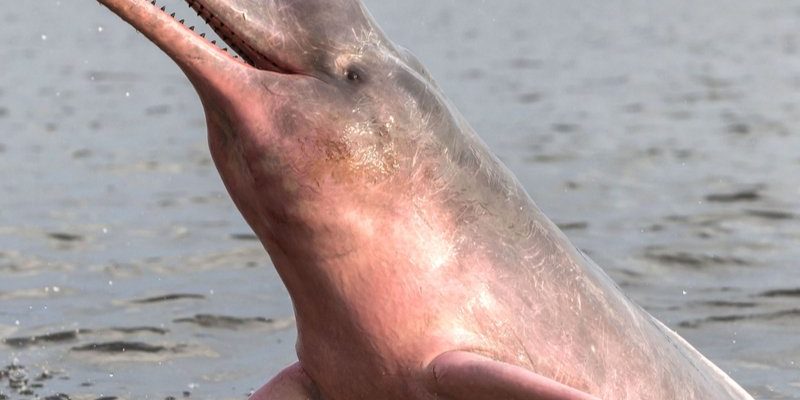
These charming pink dolphins, often referred to as “boto,” are not just beautiful to observe; they play a crucial role in the ecosystem of the Amazon River. Unfortunately, the combination of habitat loss, pollution, and human activities has put them in a tough spot. So, let’s dive deeper into the status of these remarkable creatures and explore the latest conservation efforts aimed at protecting them.
Understanding the Status of Amazon River Dolphins
To gauge whether Amazon river dolphins are endangered, let’s first take a look at their current population status. According to the International Union for Conservation of Nature (IUCN), these dolphins are classified as “Data Deficient,” which means that we don’t know exactly how many are left in the wild. It’s a bit like trying to guess the number of jellybeans in a jar without being able to peek inside! While there are estimates suggesting that there may be around 30,000 individuals, this number could significantly vary.
One major threat to these dolphins comes from habitat destruction. The rise of agriculture and urban development along the riverbanks has led to a reduction in the habitats where these dolphins thrive. Additionally, the construction of dams can disrupt their migratory paths and lessen the availability of prey. Honestly, it’s a lot for these gentle creatures to handle in their busy aquatic lives.
Another troubling factor is pollution. The Amazon River is often filled with toxins from various human activities. This pollution not only affects the dolphins’ health but also the fish they depend on for food. Imagine trying to enjoy a meal while surrounded by garbage; it’s not a pleasant thought, right? Sadly, that’s the reality for these dolphins in polluted waters.
Conservation Efforts Underway
Despite the challenges, there is hope! Many organizations and researchers are working tirelessly to protect Amazon river dolphins. For example, the Amazon Conservation Association is actively involved in habitat preservation and community outreach. They understand that educating local communities about the importance of these dolphins can lead to better conservation practices.
Some efforts include creating protected areas where dolphins can roam freely without the threat of development. It’s similar to establishing a safe zone when you’re playing a game—those areas help keep the dolphins safe from human interference. Additionally, researchers are studying dolphin behavior and population health to gather more data, which can bolster their conservation strategies.
Community engagement is also vital. Local fishermen are encouraged to adopt sustainable fishing practices to minimize bycatch, which is when non-target species get caught unintentionally in fishing gear. By involving communities in conservation efforts, we can create a supportive environment for Amazon river dolphins. After all, they share this river with the people living near its banks.
The Role of Ecotourism
Ecotourism is another avenue that holds promise for Amazon river dolphins. It allows visitors to observe these magnificent animals in their natural habitat while providing economic benefits to local communities. Picture this: a small boat gliding silently along the Amazon River, and suddenly, a pink dolphin surfaces, playfully splashing water into the air. Moments like these create lasting memories for visitors while raising awareness about the need to protect these species.
When done right, ecotourism can foster appreciation for the Amazon river dolphins and promote conservation efforts. Tour operators that follow ethical practices ensure that dolphins are not disturbed during their daily activities. For instance, they might implement strict guidelines on boat speed and distance from the dolphins. This way, the dolphins can continue their behaviors without disruptions, maintaining a balance between tourism and nature.
Of course, for ecotourism to be effective, it’s essential for local communities to have a stake in the process. When communities see the benefits of conservation—like income from tourism—they’re more likely to engage in protecting these dolphins instead of exploiting their habitat.
Challenges in Conservation
While there’s a positive trend in conservation efforts for Amazon river dolphins, they still face significant challenges. One of the biggest hurdles is funding. Conservation initiatives often rely on grants and donations, and unfortunately, not every project receives the financial backing it needs. It’s a bit like a charity bake sale—sometimes, the best intentions don’t always result in the resources needed to succeed.
Furthermore, illegal fishing and poaching remain persistent threats. Some locals might still see dolphins as a competition for fish, leading to harmful practices. Raising awareness about the ecological value of these dolphins is crucial. Imagine if people understood that protecting dolphins ultimately helps the entire river system thrive, benefiting their livelihoods as well.
Policy changes can also be slow to implement. Though there’s a growing concern for wildlife conservation, bureaucratic issues can stall vital actions. Advocating for stronger environmental protection laws at local, national, and international levels can help safeguard the habitats of these dolphins, but it takes time and persistence.
The Future of Amazon River Dolphins
So, where do we go from here? The future for Amazon river dolphins is uncertain, but it’s not without hope. With continued advocacy, research, and community involvement, we can create a sustainable environment for these remarkable creatures. As we learn more about their habits and the challenges they face, it becomes clear that knowledge is power. The more we understand about the needs of Amazon river dolphins, the better equipped we’ll be to create effective conservation strategies.
Importantly, individual actions can also make a difference. Supporting ethical ecotourism, engaging in sustainable practices, and spreading awareness through social media or community events can all contribute to conservation efforts. It’s like each little drop in the river creates a ripple effect, and together, those ripples can lead to substantial change.
In summary, while Amazon river dolphins are indeed facing threats to their survival, there are dedicated efforts underway to help them. By prioritizing conservation and protecting their natural habitat, we can ensure that future generations have the opportunity to experience the wonder of these unique animals. Let’s work together to keep the rivers of the Amazon flowing with life!

